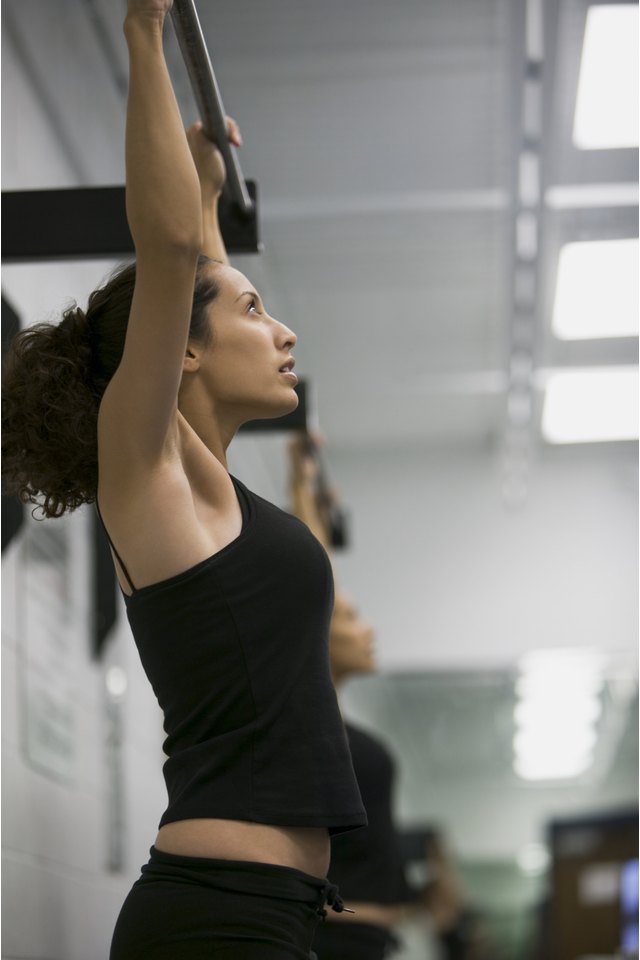Pull-ups vs. Dips

Pull-ups and dips both target the upper body, with different hand placements changing the emphasis on which muscles you use. By decreasing amount of muscular effort you use and raising the number of reps you perform, you can add pull-ups to a cardio or muscular-endurance workout. The two are low-cost exercises that you can perform at home or in a gym, so make them a regular part of your fitness training.
Pull-ups
Pull-ups differ from chin-ups primarily because of the placement of your hands as you grip the bar. When doing pull-ups, your palms face away from you. When you do chin-ups, your palms face you. This changes the muscles you emphasize. Pull-ups are more difficult than chin-ups because they increase your use of your triceps and back muscles, while chin-ups bring your pecs and biceps more into the exercise. Placing your hands closer together or farther apart also changes the emphasis on the muscles you use, allowing you to vary the exercise.
Dips
Dips work your upper body while you hold parallel bars or the tops of two chairs or lean against a bench or chair. When you perform dips on a set of bars or two chairs, your feet don’t touch the ground, requiring your upper-body muscles to raise and lower your entire weight. You can place your hands even with your hips, slightly in front of them or behind them to emphasize different muscles. With bench dips, your feet rest on the floor or another bench or chair as you put your hands behind you on a bench or chair and raise and lower yourself.
For Muscle Building
To build more muscle with pull-ups and dips, perform your reps slowly. When you perform pull-ups, raise yourself, pause, then lower yourself with your muscles, rather than simply dropping back down. After you lower yourself, pause before you begin lifting yourself again. Use this same method when performing dips. This will prevent you from using a bounce to assist you as you begin your uplift. Using muscular effort to lower yourself ensures that you will create better muscle contractions each time.
For Endurance Workouts
To perform pull-ups and dips for 30 seconds or longer, perform your reps faster, let gravity help lower you and use the bounce to get you started back up. Your goal is not maximal muscle building, so as long as you can maintain proper form and avoid back strain, it’s OK to perform your reps with less muscular effort. This will reduce muscle fatigue so you can continue performing reps longer.
References
Writer Bio
Sam Ashe-Edmunds has been writing and lecturing for decades. He has worked in the corporate and nonprofit arenas as a C-Suite executive, serving on several nonprofit boards. He is an internationally traveled sport science writer and lecturer. He has been published in print publications such as Entrepreneur, Tennis, SI for Kids, Chicago Tribune, Sacramento Bee, and on websites such Smart-Healthy-Living.net, SmartyCents and Youthletic. Edmunds has a bachelor's degree in journalism.
